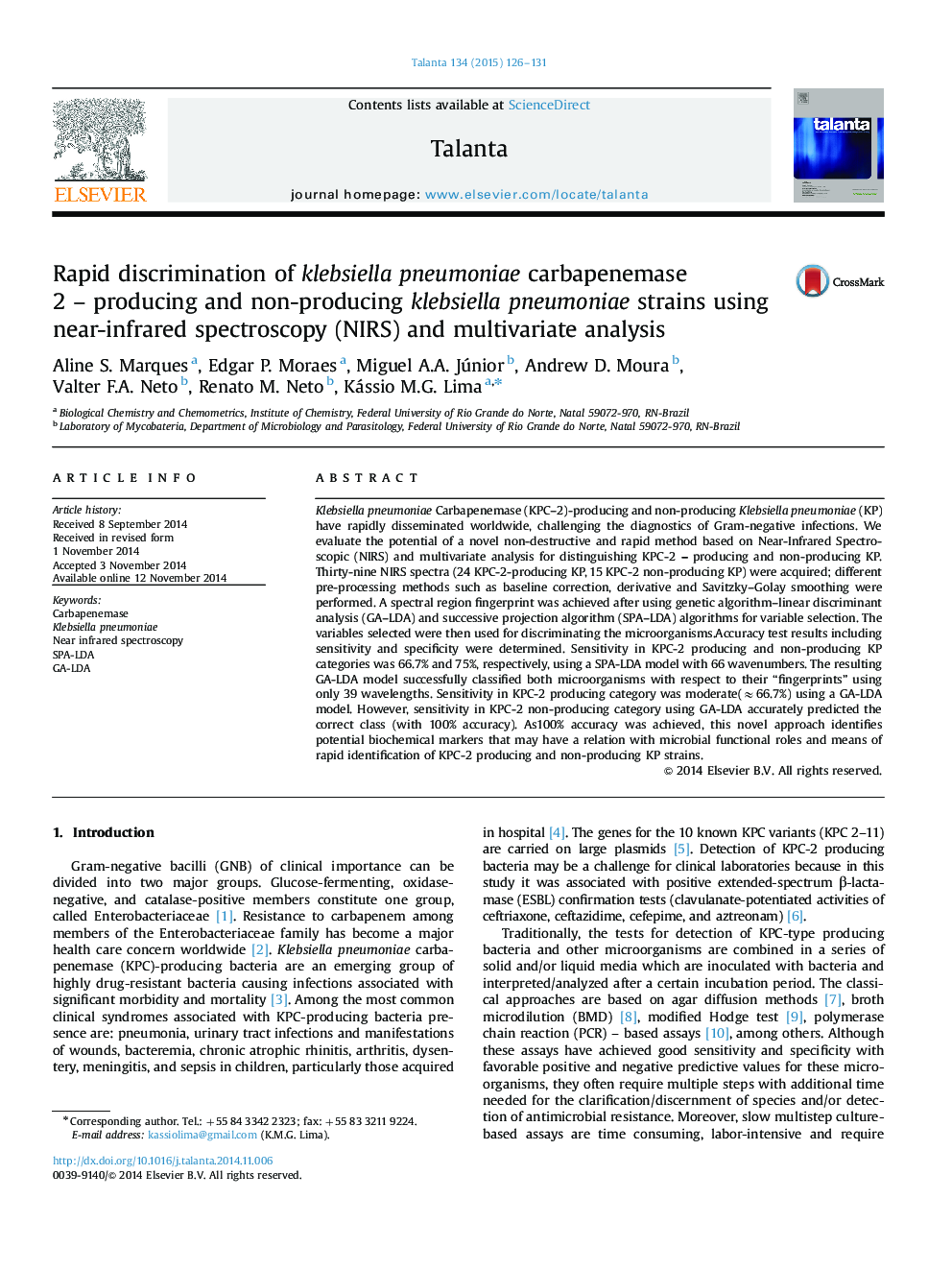| کد مقاله | کد نشریه | سال انتشار | مقاله انگلیسی | نسخه تمام متن |
|---|---|---|---|---|
| 1244059 | 1495801 | 2015 | 6 صفحه PDF | دانلود رایگان |

• NIRS was applied to identification and classification of KPC-2 producing and non-producing KP.
• SPA-LDA and GA-LDA were used for spectral region fingerprint.
• Sensitivity in KPC-2 no-producing category using GA-LDA has accurately predicted correctly.
• This novel approach identifies potential biochemical markers.
Klebsiella pneumoniae Carbapenemase (KPC–2)-producing and non-producing Klebsiella pneumoniae (KP) have rapidly disseminated worldwide, challenging the diagnostics of Gram-negative infections. We evaluate the potential of a novel non-destructive and rapid method based on Near-Infrared Spectroscopic (NIRS) and multivariate analysis for distinguishing KPC-2 – producing and non-producing KP. Thirty-nine NIRS spectra (24 KPC-2-producing KP, 15 KPC-2 non-producing KP) were acquired; different pre-processing methods such as baseline correction, derivative and Savitzky–Golay smoothing were performed. A spectral region fingerprint was achieved after using genetic algorithm–linear discriminant analysis (GA–LDA) and successive projection algorithm (SPA–LDA) algorithms for variable selection. The variables selected were then used for discriminating the microorganisms.Accuracy test results including sensitivity and specificity were determined. Sensitivity in KPC-2 producing and non-producing KP categories was 66.7% and 75%, respectively, using a SPA-LDA model with 66 wavenumbers. The resulting GA-LDA model successfully classified both microorganisms with respect to their “fingerprints” using only 39 wavelengths. Sensitivity in KPC-2 producing category was moderate(≈66.7%) using a GA-LDA model. However, sensitivity in KPC-2 non-producing category using GA-LDA accurately predicted the correct class (with 100% accuracy). As100% accuracy was achieved, this novel approach identifies potential biochemical markers that may have a relation with microbial functional roles and means of rapid identification of KPC-2 producing and non-producing KP strains.
Figure optionsDownload as PowerPoint slide
Journal: Talanta - Volume 134, 1 March 2015, Pages 126–131